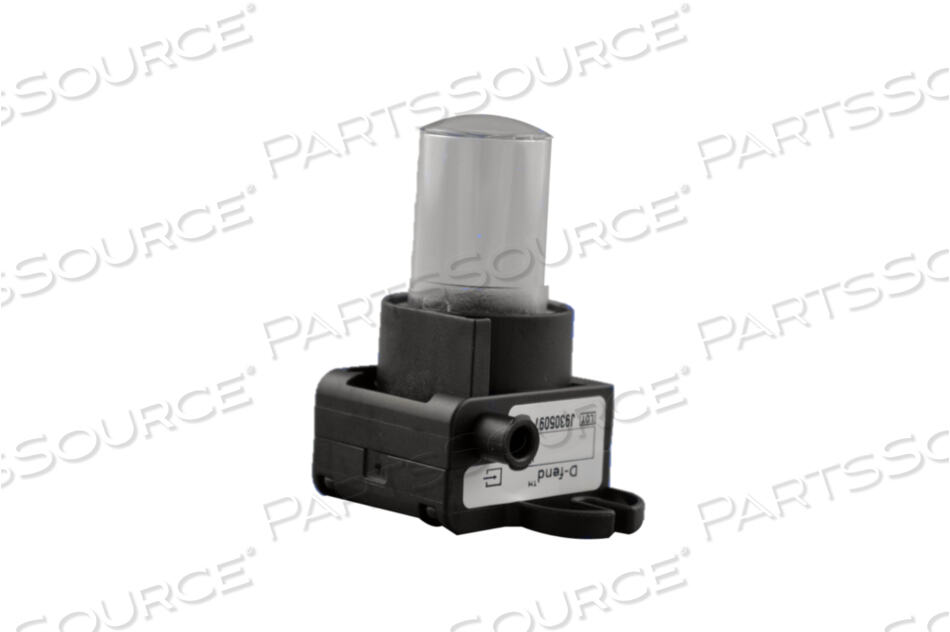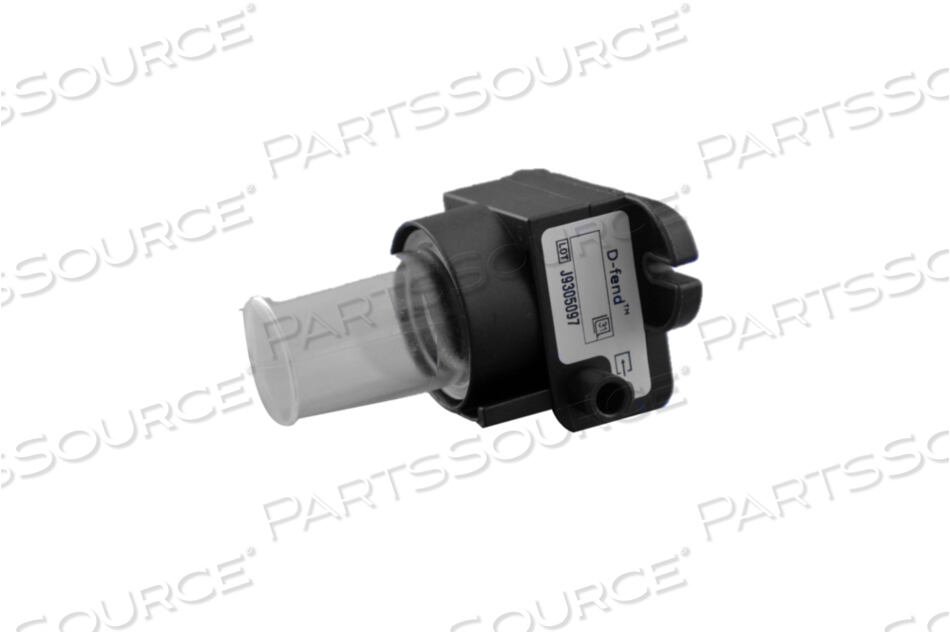WATER TRAP, BLACK by Datex-Ohmeda



OEM#: 876446-HELWATER TRAP, BLACK by Datex-Ohmeda
The Water Trap D-fend is used in the airway modules of anesthesia devices. The operator should verify that the water trap container is empty and properly attached before connecting to the patient. Before connecting the exhaust line to the sample gas outlet on the compact airway module, ensure the other end is connected to the sample gas return port on the anesthesia device. Incorrect connections may cause injury to patients. Connect the exhaust line from the sample gas return port to the sample gas outlet if N₂0 or volatile agents are used. Attach the gas sampling line to the sampling line connector on the water trap and turn the system on. Replace the D-Fend water trap at least every two months or when a sample line is blocked or replace D-Fend if an alarm persists.The module should always have the water trap connected to prevent dust from entering the module. Empty the water container whenever over half full by disconnecting the water container from the water trap cartridge. Attach the water trap to module by pushing it firmly to its place, so that the locking latch makes a clicking sound.
The Water Trap D-fend is used in the airway modules of anesthesia devices. The operator should verify that the water trap container is empty and properly attached before connecting to the patient. Before connecting the exhaust line to the sample gas outlet on the compact airway module, ensure the other end is connected to the sample gas return port on the anesthesia device. Incorrect connections may cause injury to patients. Connect the exhaust line from the sample gas return port to the sample gas outlet if N₂0 or volatile agents are used. Attach the gas sampling line to the sampling line connector on the water trap and turn the system on. Replace the D-Fend water trap at least every two months or when a sample line is blocked or replace D-Fend if an alarm persists.The module should always have the water trap connected to prevent dust from entering the module. Empty the water container whenever over half full by disconnecting the water container from the water trap cartridge. Attach the water trap to module by pushing it firmly to its place, so that the locking latch makes a clicking sound.
- 876446-HEL: GE Healthcare: Canonical Redirect
- Datex-Ohmeda
- S/5 COMPACT
- ULTIMA
The Water Trap D-fend is used in the airway modules of anesthesia devices. The operator should verify that the water trap container is empty and properly attached before connecting to the patient. Before connecting the exhaust line to the sample gas outlet on the compact airway module, ensure the other end is connected to the sample gas return port on the anesthesia device. Incorrect connections may cause injury to patients. Connect the exhaust line from the sample gas return port to the sample gas outlet if N₂0 or volatile agents are used. Attach the gas sampling line to the sampling line connector on the water trap and turn the system on. Replace the D-Fend water trap at least every two months or when a sample line is blocked or replace D-Fend if an alarm persists.The module should always have the water trap connected to prevent dust from entering the module. Empty the water container whenever over half full by disconnecting the water container from the water trap cartridge. Attach the water trap to module by pushing it firmly to its place, so that the locking latch makes a clicking sound.
The Water Trap D-fend is used in the airway modules of anesthesia devices. The operator should verify that the water trap container is empty and properly attached before connecting to the patient. Before connecting the exhaust line to the sample gas outlet on the compact airway module, ensure the other end is connected to the sample gas return port on the anesthesia device. Incorrect connections may cause injury to patients. Connect the exhaust line from the sample gas return port to the sample gas outlet if N₂0 or volatile agents are used. Attach the gas sampling line to the sampling line connector on the water trap and turn the system on. Replace the D-Fend water trap at least every two months or when a sample line is blocked or replace D-Fend if an alarm persists.The module should always have the water trap connected to prevent dust from entering the module. Empty the water container whenever over half full by disconnecting the water container from the water trap cartridge. Attach the water trap to module by pushing it firmly to its place, so that the locking latch makes a clicking sound.
- 876446-HEL: GE Healthcare: Canonical Redirect
- Datex-Ohmeda
- S/5 COMPACT
- ULTIMA
The Water Trap D-fend is used in the airway modules of anesthesia devices. The operator should verify that the water trap container is empty and properly attached before connecting to the patient. Before connecting the exhaust line to the sample gas outlet on the compact airway module, ensure the other end is connected to the sample gas return port on the anesthesia device. Incorrect connections may cause injury to patients. Connect the exhaust line from the sample gas return port to the sample gas outlet if N₂0 or volatile agents are used. Attach the gas sampling line to the sampling line connector on the water trap and turn the system on. Replace the D-Fend water trap at least every two months or when a sample line is blocked or replace D-Fend if an alarm persists.The module should always have the water trap connected to prevent dust from entering the module. Empty the water container whenever over half full by disconnecting the water container from the water trap cartridge. Attach the water trap to module by pushing it firmly to its place, so that the locking latch makes a clicking sound.
The Water Trap D-fend is used in the airway modules of anesthesia devices. The operator should verify that the water trap container is empty and properly attached before connecting to the patient. Before connecting the exhaust line to the sample gas outlet on the compact airway module, ensure the other end is connected to the sample gas return port on the anesthesia device. Incorrect connections may cause injury to patients. Connect the exhaust line from the sample gas return port to the sample gas outlet if N₂0 or volatile agents are used. Attach the gas sampling line to the sampling line connector on the water trap and turn the system on. Replace the D-Fend water trap at least every two months or when a sample line is blocked or replace D-Fend if an alarm persists.The module should always have the water trap connected to prevent dust from entering the module. Empty the water container whenever over half full by disconnecting the water container from the water trap cartridge. Attach the water trap to module by pushing it firmly to its place, so that the locking latch makes a clicking sound.
- 876446-HEL: GE Healthcare: Canonical Redirect
- Datex-Ohmeda
- S/5 COMPACT
- ULTIMA
